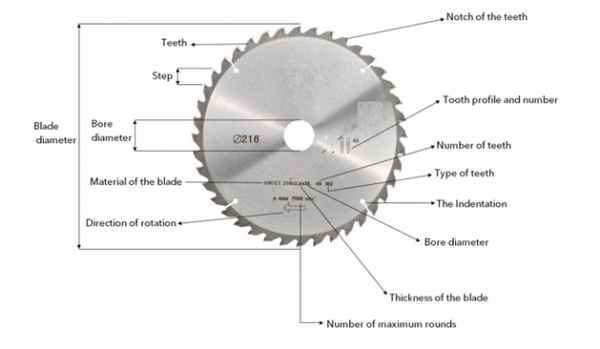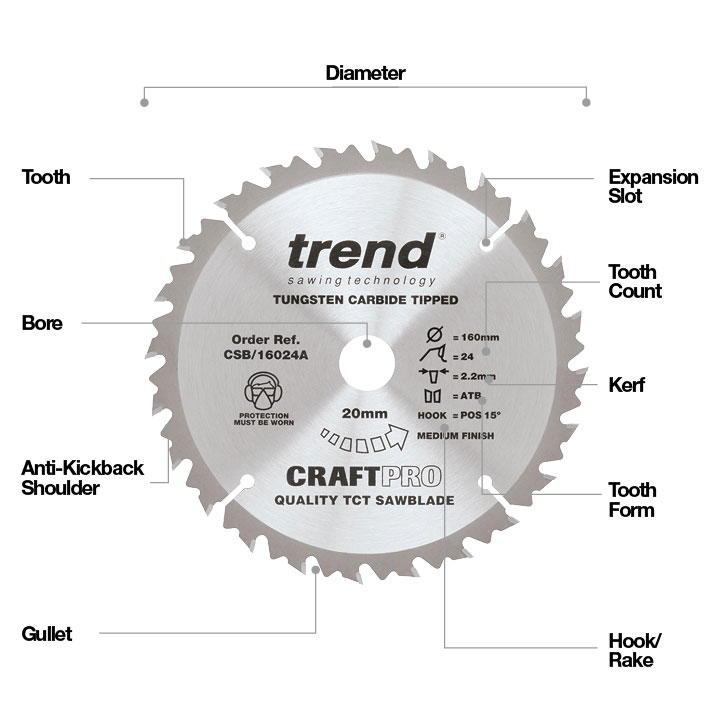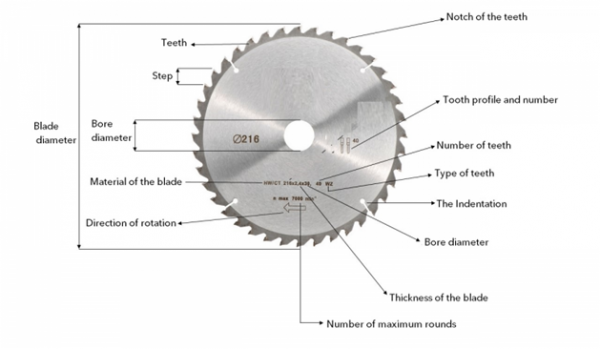Have you ever wondered if the size of the bore for a circular saw really matters? Well, you’re in the right place to find out! In this article, we’re going to tackle the question: “Does bore size matter for a circular saw?”
If you’re new to the world of circular saws, you may be wondering what a bore size even is. Don’t worry, we’ve got you covered. In simple terms, the bore size refers to the diameter of the hole in the middle of the circular saw blade.
Now, you might be thinking, “Why does the bore size matter? Can’t I just use any blade with my circular saw?” Stick around, and we’ll dive into why bore size is an important consideration when it comes to using a circular saw. So let’s get started and explore the fascinating world of bore size and circular saws!
When it comes to circular saws, does bore size matter? Absolutely! The bore size refers to the diameter of the hole in the blade that fits onto the saw’s arbor. Choosing the right bore size is crucial for a proper fit, which ensures stability and safety during operation. A mismatched bore size can lead to wobbling and increased risk of accidents. Always check the bore size compatibility of your circular saw and blades to ensure optimal performance.

Does Bore Size Matter in a Circular Saw? Exploring the Impact of Bore Size on Performance
When it comes to circular saws, one important factor to consider is the bore size of the blade. The bore size refers to the diameter of the hole in the center of the circular saw blade. Some people may argue that the bore size doesn’t matter as long as the blade fits the saw, but is that really the case? In this article, we will delve into the world of circular saws and shed light on whether the bore size truly impacts the performance of these powerful cutting tools.
Understanding Bore Size and Its Importance in Circular Saws
The bore size of a circular saw blade is crucial because it determines its compatibility with your specific circular saw. Circular saws typically come with a spindle size that corresponds to a specific bore size. The two most common bore sizes for circular saw blades are 5/8 inches and 1 inch. It’s essential to choose a blade with a bore size that matches the spindle size of your circular saw to ensure proper installation and optimal performance.
Using a circular saw blade with a bore size that doesn’t match the spindle size can lead to significant issues. For instance, if you try to fit a blade with a smaller bore size onto a larger spindle, the blade will wobble and may not be securely attached. This can result in inaccurate cuts and potential safety hazards. On the other hand, using a blade with a larger bore size on a smaller spindle can lead to a loose fit, causing vibration and potential damage to the saw and blade.
In summary, the bore size of a circular saw blade is essential for proper installation and performance. It ensures a secure fit on the saw and maintains stability during use, resulting in accurate cuts and improved safety.
The Impact of Bore Size on Cutting Performance
While bore size primarily affects the compatibility and installation of a circular saw blade, it’s natural to wonder if it has any impact on the actual cutting performance. Does a larger or smaller bore size influence the quality and precision of cuts? Let’s explore:
1. Stability and Precision: A blade with a proper bore size that matches the saw’s spindle will offer greater stability and precision during cutting. When the blade is securely attached to the saw, there is minimal vibration and movement, resulting in cleaner and more accurate cuts.
2. Reduction in Deflection: Deflection refers to the bending or flexing of the blade during cutting. Using a blade with the correct bore size reduces deflection, as it ensures a secure connection with the saw. This is especially crucial when making intricate or precise cuts where any deviation can compromise the final result.
3. Improved Safety: The right bore size not only enhances cutting performance but also promotes safety. A properly installed blade reduces the risk of it becoming loose or flying off during operation, minimizing the potential for accidents and injuries.
In conclusion, while the primary function of the bore size in a circular saw blade is to ensure compatibility and stability, it indirectly contributes to improved cutting performance and safety.
Tips for Choosing the Right Bore Size for Your Circular Saw
Now that we understand the significance of bore size let’s explore some tips for selecting the right bore size for your circular saw:
- Check the manufacturer’s specifications: Refer to the owner’s manual of your circular saw to determine the recommended bore size. The manual will provide detailed information on which bore sizes are compatible with your specific model.
- Measure the existing blade and spindle: If you have an existing circular saw blade, measure its bore size accurately using a caliper or ruler. This will help you choose a replacement blade with the same bore size.
- Consider the type of cuts you’ll be making: Certain types of cuts, such as rip cuts or crosscuts, may require specific blade sizes. Consult with professionals or research online to find out which bore size is best suited for the specific cuts you’ll be performing.
By following these tips, you can ensure that you select the right bore size for your circular saw and optimize its performance.
Benefits of Choosing the Correct Bore Size
When you choose the correct bore size for your circular saw blade, you unlock a range of benefits that contribute to better performance, accuracy, and safety. Here are some advantages of selecting the right bore size:
Improved Cutting Efficiency
By using a blade with the correct bore size, you maximize the efficiency of your circular saw. The secure fit and reduced vibration result in smoother cuts, reducing the need for subsequent sanding or refinishing. This not only saves you time and effort but also ensures consistent professional-looking results.
Extended Blade Life
Properly fitting the blade onto the circular saw minimizes stress and strain on the blade itself. With reduced deflection and no movement between the blade and saw, the blade’s overall lifespan is prolonged. This means fewer blade replacements and cost savings in the long run.
Enhanced Safety
Ensuring that the blade is securely attached to the circular saw significantly reduces the risk of accidents. A loose or improperly fitted blade can fly off during operation, causing severe injury or damage. By selecting the correct bore size and properly installing the blade, you create a safer working environment for yourself and others around you.
Elevated Precision and Accuracy
When using a circular saw with the correct bore size, you can achieve high levels of precision and accuracy in your cuts. The stability and reduced deflection minimize the chances of the blade deviating from the desired cutting line, resulting in cleaner and more precise cuts.
In summary, choosing the correct bore size for your circular saw blade brings a multitude of benefits, including improved cutting efficiency, extended blade life, enhanced safety, and elevated precision and accuracy.
The Impact of Bore Size on Cutting Performance: A Comparative Analysis
In this section, we will compare the cutting performance of circular saw blades with different bore sizes. Through a side-by-side analysis, we can examine whether bore size truly plays a role in determining the quality of cuts.
Bore Size: 5/8 inch
A circular saw blade with a bore size of 5/8 inch is a standard option for many circular saws. It is commonly used in both professional and DIY settings for various types of cuts. The smaller bore size offers versatility and compatibility with a wide range of circular saw models.
By matching the saw’s spindle size with a blade of 5/8 inch bore size, you can achieve precise and accurate cuts. The stability provided by the secure fit of the blade ensures minimal vibration and deflection, resulting in clean and professional-looking cuts.
While a 5/8 inch bore size may be suitable for most applications, it’s important to consider the specific requirements of your cutting projects. If you frequently work with thicker or denser materials, opting for a larger bore size may provide additional stability and improve cutting performance.
Bore Size: 1 inch
A circular saw blade with a bore size of 1 inch is often preferred for heavy-duty cutting tasks. This larger bore size provides increased stability and reduces the chances of deflection, making it ideal for cutting through tougher materials.
When using a circular saw with a 1 inch bore size, you’ll notice enhanced cutting efficiency and improved control. The secure fit of the blade on the saw ensures a smooth operation and minimal vibration, resulting in cleaner and more accurate cuts, especially in challenging cutting scenarios.
While a 1 inch bore size can offer advantages in certain situations, it’s important to note that it may not be compatible with all circular saw models. Ensure that your saw’s spindle size is compatible with a 1 inch bore size before choosing a blade.
Final Tips for Choosing the Right Circular Saw Blade Bore Size
To help you make an informed decision when selecting the bore size for your circular saw blade, here are some additional tips:
Consider the Depth of Cut
The depth of cut you require for your projects can influence the bore size you choose. If you often work with thick materials, a larger bore size may be more appropriate for the increased stability and better cutting performance it provides.
Consult with Professionals
If you’re unsure about the bore size to choose for your circular saw, don’t hesitate to seek advice from professionals in the field. They can provide valuable insights and recommendations based on their experience and expertise.
Experiment and Test
While there are general guidelines for bore size selection, the ultimate decision should be based on your specific cutting needs and preferences. If possible, experiment with different bore sizes and test their performance on various materials to find the best fit for your requirements.
By following these tips and considering your unique circumstances, you can confidently select the right bore size for your circular saw blade and maximize its performance.
In conclusion, the bore size of a circular saw blade does indeed matter. While its primary role is to ensure compatibility and stability, the bore size indirectly impacts cutting performance, precision, and safety. By choosing the correct bore size and employing proper installation techniques, you can harness the full potential of your circular saw and achieve outstanding results in your cutting projects.
Key Takeaways: Does Bore Size Matter for a Circular Saw?
- The bore size of a circular saw blade is important for compatibility with your specific saw model.
- Choosing the wrong bore size can result in the blade not fitting or securing properly.
- Using the correct bore size ensures optimal performance and safety during cutting.
- It’s essential to check the bore size recommended by your circular saw’s manufacturer.
- When purchasing new saw blades, ensure they have the correct bore size to fit your saw.
Frequently Asked Questions
In the world of circular saws, the bore size is an important consideration. Let’s dive into some common questions about whether bore size matters in a circular saw.
1. What is the bore size of a circular saw and why does it matter?
The bore size refers to the diameter of the hole in the center of the circular saw blade where it attaches to the saw’s arbor. It matters because the size of the bore must match the size of the saw’s arbor. If the sizes do not match, the blade won’t fit properly and can pose a safety risk. Additionally, using the wrong size can affect the performance and efficiency of the saw.
Manufacturers typically provide the bore size information either on the saw blade or in the product specifications. It’s important to check and ensure that the bore size of the blade matches the arbor size of your circular saw before using it.
2. Can I use a circular saw blade with a smaller bore size on a saw with a larger arbor?
No, it is not recommended to use a circular saw blade with a smaller bore size on a saw with a larger arbor. The blade needs to fit tightly and securely on the arbor, which ensures proper alignment and reduces vibration. Using a smaller bore size can result in an unstable blade, compromising both safety and cutting accuracy.
If you have a circular saw with a larger arbor size, it’s advisable to use blades specifically designed for that size. Using adapters or shim rings to fit a smaller bore size blade onto a larger arbor is not recommended as it can compromise the stability and performance of the saw.
3. Does using a circular saw blade with a larger bore size improve cutting performance?
The bore size of a circular saw blade does not have a direct impact on cutting performance. The key factors that influence cutting performance are the quality and design of the blade itself, such as the number and shape of the teeth, the material it’s made of, and any special features.
While bore size does not directly affect cutting performance, it is still important to ensure that the blade’s bore size matches the arbor size of your saw for safety and proper fit. Using the correct size blade allows the blade to spin properly, minimizing vibration and ensuring accurate cuts.
4. Can I modify the bore size of a circular saw blade to fit my saw?
It is generally not recommended to modify the bore size of a circular saw blade. The bore size is designed to match the specific arbor size of a particular saw model. Modifying the bore size can compromise the structural integrity of the blade and potentially lead to unsafe operating conditions.
If you find that your circular saw has a different arbor size than the blade you want to use, it’s best to purchase a blade specifically designed for your saw’s arbor size. There are a wide variety of circular saw blades available in different sizes to suit various saw models.
5. Are there any other factors to consider besides bore size when choosing a circular saw blade?
Yes, there are several other factors to consider when choosing a circular saw blade. Some important aspects to keep in mind include the type of material you will be cutting, the desired cutting quality (smoothness or speed), the number of teeth on the blade, and whether you need any special features like anti-kickback or laser guides.
Each of these factors can impact the performance and effectiveness of the blade for different applications. It’s important to select a blade that is specifically designed for the type of cutting you will be doing to ensure optimal results.

circular saw size
Summary
So, does the size of the bore in a circular saw blade really matter? The answer is yes. The size of the bore affects the compatibility of the blade with your saw. Make sure to choose a blade with the right bore size for your specific saw model.
Moreover, the bore size also impacts the stability and performance of the blade during cutting. A blade with an incorrect bore size may cause vibrations, noise, and even damage to your saw. To ensure smooth and efficient cutting, always use a circular saw blade with the appropriate bore size.
